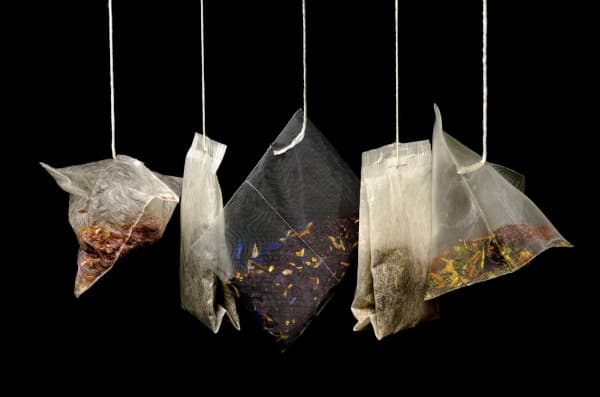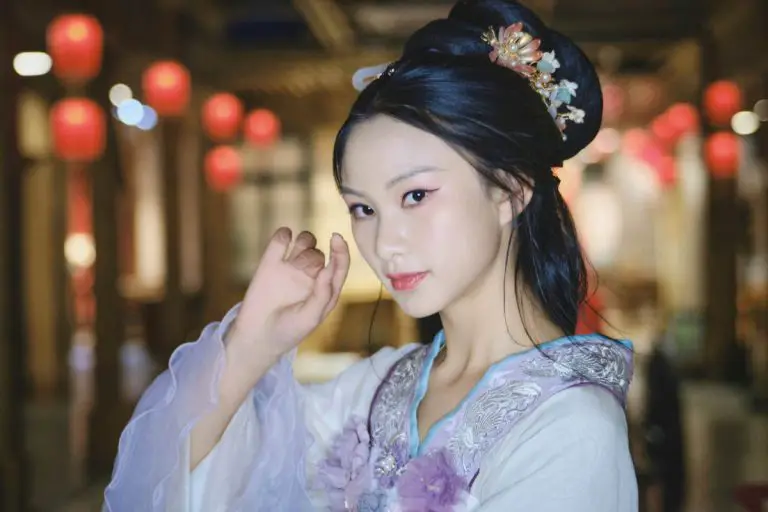Like the UK, India, and many other countries, tea is the national drink of China. However, Chinese tea has its own unique characteristics from unique flavors, colors, and health benefits. There are actually several types of Chinese tea, differentiated from the processes of making it and the varying degrees in fermentation.
Different Types of Chinese Tea
Although there is a wide range of Chinese tea varieties for us to taste, genuine Chinese teas can be differentiated into just six basic types based on the processing techniques. They are:
- Green tea (茶 lǜ chá)
- White tea (茶 bái chá)
- Yellow tea (黄茶 huáng chá)
- Oolong tea (乌茶 Wū Lóng Chá)
- Black tea (红茶 Hóng Cha)
- Dark tea (普洱茶 Pǔ’ěr chá)
At first glance, they are differentiated based on colors, which can be rather confusing for the Western point of view. In the West, the color used in the classification is usually the color of the actual leaf. After processed, the leaves might change in color.
However, in Chinese tea, the classification refers to the actual color of the tea brew.
Chinese tea is produced via tea fermentation. However, it’s important to note that tea fermentation is not the same as fermentation processes in producing liquor and beer. In producing alcohol, bacteria are added to convert sugar to alcohol, but in tea-making, fermentation’ refers to oxidation where the tea leaves are exposed to air.
Green tea is the less fermented type (close to 0% or 0% fermentation) while dark tea is fully fermented, where the te leaves are withered and rolled to allow total oxidation. Tea fermentation is controlled via heat, such as steaming or other heating methods. In green tea, for example, heat is applied to the leaves immediately after picking to minimize oxidation. This is why green tea has the most grassy’, natural flavor.
In general, green tea has less 0% to 5% oxidation/fermentation, white tea 5-10%, yellow tea 10% fermentation or slightly less, oolong tea with around 10% to 60% oxidation, black tea with 60-85% fermentation, and finally dark tea with 85% to 100% fermentation.
Below, we will discuss each type individually.
Related reading: “The Chinese Method of Tea-Making: Your Guide to Gongfu Cha“ – Opens in new tab
Green Tea (茶 lǜ chá)
The Chinese green tea is both the most popular Chinese tea and also the oldest, having been around for around 3,000 years.
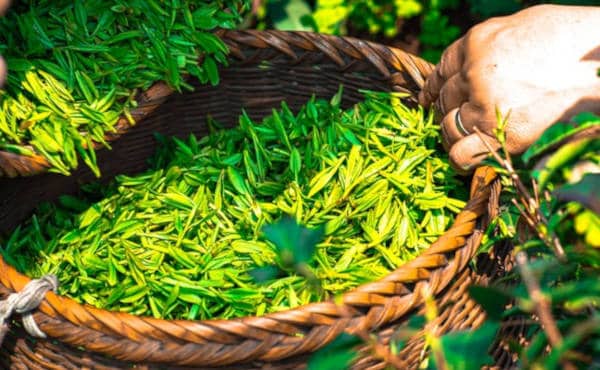
As mentioned, green tea is made when freshly-picked tea leaves are dried and heated, but we can further divide the process of making green tea into three different techniques: water removal, rolling, and heating.
The traditional Chinese green tea has a pale, almost transparent color with a sharp flavor. It is famous for its various health benefits on anti-cancer, anti-aging, helping with inflammation, and losing weight, among others.
There are several famous varieties of Chinese green tea, based on the location of the tree: West Lake Dragon Well Tea is arguably the most famous and has been popular since the days of the Tang dynasty. It is grown in Hangzhou.
Another popular variety is the Maojian green tea, grown on Mount Huangshan in Anhui Province. It is famous for how the leaves are covered with fine white hairs.
See, products and prices of Green Tea (Aff.link) – opens in new tab
White Tea (茶 bái chá)
Chinese white tea, like green tea, undergoes minimal fermentation. Although there are many varieties of white tea, white tea typically is not rolled and undergoes very minimal to no oxidation, giving it a very light signature flavor.

The name white tea’ comes from the fact that the tea leaves were picked when fine white hairs appeared on the tender shoots—which occur only a few days each year. Also, it looks almost like clear water, and there’s a Chinese tradition that poor Chinese people in ancient times offer plain boiled water to guests, calling it “white tea”.
White tea is famous for its mild and mellow taste, and also has various unique health benefits like improving eyesight, clearing toxins and heat, reducing fatigue, and better blood sugar control.
White tea is especially famous in Fujian with two popular varieties: White Hair Silver Needle, and White Peony. However, there are also other popular varieties like the Shou Mei tea and Gong Mei tea.
See, products and prices of White Tea (Aff.link) – opens in new tab

Yellow Tea (黄茶 huáng chá)
The process of making yellow tea is quite similar to that of green tea, as discussed above. However, the damp tea leaves are oxidized before or after they are dried naturally to produce the yellow color (and the distinct fermented flavor).
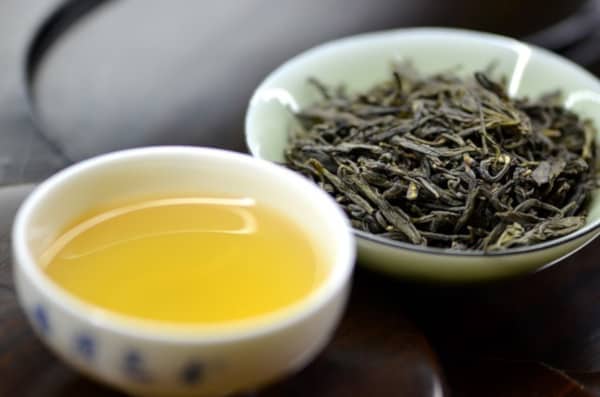
Yellow was the color of royalty in China, and it is believed that Yellow tea was the high-quality tea that was served to ancient Chinese emperors. It is said that Yellow tea was bred around 2,000 years ago in Sichuan, southeast China and it is believed that it was invented by accident when green tea that was not dried properly turn yellow.
Due to this fact, people back then considered yellow tea as a ruined green tea, but gradually people came to enjoy the distinct flavor of the yellow tea.
Yellow tea is especially good in helping digest and metabolizes fats, so it’s good for your stomach and spleen.
We can divide yellow tea into three sub-varieties: yellow big tea, yellow small tea, and yellow bud tea based on the leaves/buds. Mengding Mountain Huangya and Jun Mountain Yinzhen are two of the most popular yellow tea varieties in China.
See, products and prices of Yellow Tea (Aff.link) – opens in new tab
Oolong Tea (乌茶 Wū Lóng Chá)
Oolong tea is also known as blue tea or Qing cha. With its mild oxidation, it tastes somewhere between green and black tea: still fairly mild but can be stronger than what you expected. We can safely say that the tase is more similar to the green tea with its freshness, but the oolong tea features the strong fragrance of the black tea.

In the last few years, oolong tea has gained more popularity in recent years due to its health benefits, especially because it is very effective in helping to reduce cholesterol and high blood pressure. So, oolong tea is famous for preventing coronary heart disease, stroke, and other diseases. Also, oolong tea is fairly high in caffeine and is a popular choice in keeping ourselves fit, so don’t drink too many cups before bed.
Lately, oolong tea is also popular as a weight loss aid (and beauty enhancer) because it is believed to aid in fat decomposition.
There are several famous varieties of oolong tea including the Anxi Oolong Tea, Taiwan Pao Chong tea, Da Hong Pao of Wuyi Mountains, and Tieguanyin (the Iron Buddha) tea.
See, products and prices of Oolong Tea (Aff.link) – opens in new tab
Black Tea (红茶 Hóng Cha)
The Chinese Black Tea is famous not only in China, but abroad, and is a fully oxidized Chinese tea. A brewed black tea can be reddish-brown to very dark brown in color and has relatively high caffeine of 40-60 milligrams per cup.
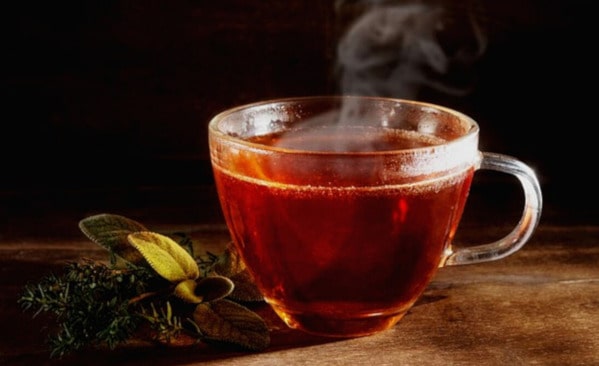
In China, black tea can be divided into two main varieties: Southern Chinese black tea, which consists of black teas from the Yunnan province, and Northern Chinese, like Keemun black teas from Anhui and others.
Due to its popularity, black tea is the most produced Chinese tea, and also the best known Chinese tea for people abroad. The tea leaves are rolled and sometimes crushed before they are fully oxidized through fermentation instead of steaming or green frying processes.
The name 红茶 Hóng Cha actually means “red tea” due to the color of the brew, but it is more popular in the Western world as black tea. There are actually three different varieties of black tea: small piece. Brocken black, and Gongfu black tea.
Take a look at these “Chinese Teaware“ designs – Aff.link
The small piece black tea is the oldest variety and was originally produced near Fujian and Chong’an.Gongfu black tea is China’s specialty and was a modification of the small piece black tea. The Broken black tea, on the other hand, was originally produced in India and Sri Lanka before being brought to China in the 1950s.
The Chinese black tea is popular as a diuretic, helping us in maintaining a good appetite, and is great in maintaining fitness and overall health. Keemun tea is among the most popular black tea varieties in China, but Lapsang Souchong and Gongfu black tea are also popular.
See, products and prices of Black Tea (Aff.link) – opens in new tab
Dark Tea (Hei Cha 黑茶)
Dark tea is aged and fully-fermented tea and can be considered as a post-fermented tea. Instead of oxidation, dark tea undergoes an actual fermentation process with bacteria, which can be divided into six different processes: water-removal, rolling, heaping, second rolling, baking, and drying.
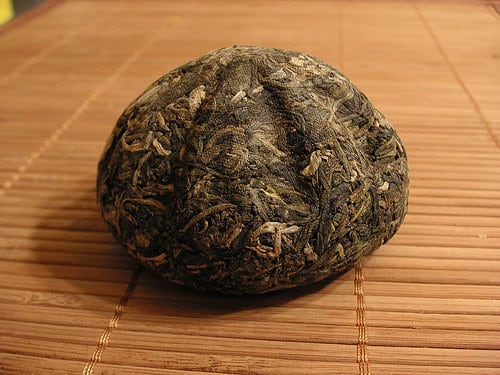
Dark tea is actually very smooth in taste although it is darker colored than the black tea (hong cha). Since the dark tea is naturally fermented (like alcohol beverages), when stored properly it will taste better when it’s older. It contains relatively high caffeine of 60-70 milligrams per cup.
普洱茶 Pǔ’ěr chá is a very popular variety of dark tea, which is made using semi-fermented green tea from Yunnan, creating a black/brown colored brew via the secondary fermentation process that takes 6-12 months. During this second fermentation process, the leaves are contained in a warm and humid environment to encourage fungal and bacterial growth.
There are also other popular varieties like the Sichuan border tea, Brick tea, and Anhua Dark tea. Dark tea can help cut through cholesterol and fat burning and has been shown to lower triglyceride.
See, products and prices of Dark Tea (Aff.link) – opens in new tab
An Introduction to Chinese History & Culture (Aff.link)
Dive into China’s rich past and intriguing present! From ancient dynasties to modern powerhouses, uncover Chinese culture facts, pivotal moments, and the captivating tales that have shaped this vast nation.
Stay in Touch
 Join our newsletter by using the forms on this website or click here!
Join our newsletter by using the forms on this website or click here! Follow us on Google News
Follow us on Google News Follow us on Facebook
Follow us on Facebook
Featured Image by Rudy and Peter Skitterians from Pixabay

